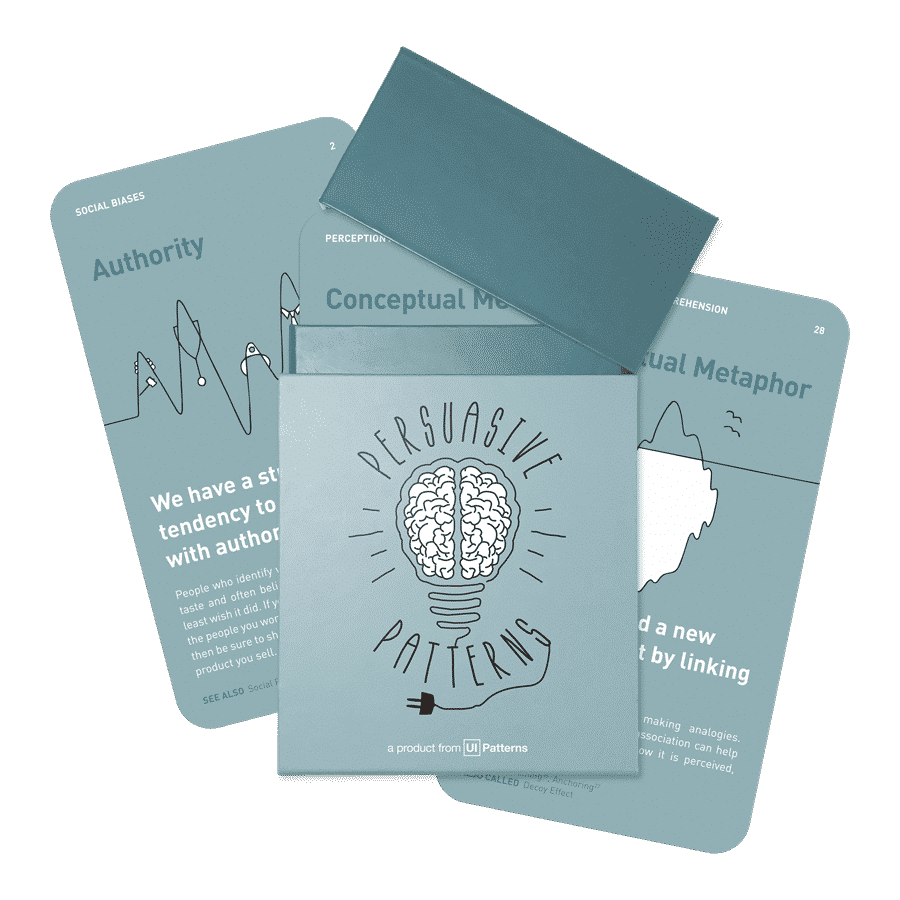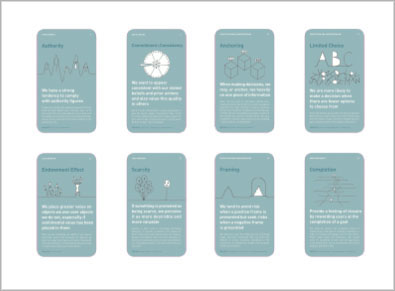How to use Habit Stacking to build habit-forming products
How to design for user engagement that feels effortless and lasts forever
Design for behavior change with the Persuasive Patterns card deck
Apply psychological principles to influence decisions, increase engagement, and optimize user experience.
Get your deck!You ever wonder why some products become part of people’s daily routines while others get deleted in a week? Most apps fail—not because they lack value, but because they expect users to form new habits from scratch. This is a fundamental mistake. Behavioral science tells us that habits don’t form out of thin air. Instead of asking users to create new routines, the smarter approach is to integrate your product into what they already do. This is where Habit Stacking comes in.
By anchoring your product’s key actions to an existing user habit, you make engagement automatic instead of relying on motivation, reminders, or push notifications. And when you pair Habit Stacking with Persuasive Patterns, you create an experience so seamless and rewarding that users don’t just start using your product—they keep using it.
Habit Stacking, as popularized by James Clear in Atomic Habits, is based on a simple but powerful idea: new behaviors stick best when anchored to existing routines. Instead of forcing a new action into someone’s life, you attach it to something they already do effortlessly. The formula is straightforward:
After [current habit], I will [new habit].
For example:
- After I brush my teeth, I will floss one tooth.
- After I make coffee, I will write down my top three priorities for the day.
If someone already drinks coffee every morning, adding a new behavior—such as writing down three daily priorities—becomes significantly easier when it’s attached to that well-established habit. This works because it removes decision fatigue. Users don’t have to remember to take action; they simply do it as part of an automatic sequence.
Instead of hoping users return to your app, you embed your product’s key action into their existing behaviors. Imagine you’re designing a learning app. Rather than sending random push notifications that get ignored, you leverage a behavior that already exists: checking morning emails. If you introduce a simple habit stack: “After checking emails, I will complete one language lesson”—you create a seamless, natural flow. Suddenly, the user isn’t trying to form a completely new habit; they’re extending an existing one. This dramatically increases the likelihood of repeated engagement.
Sustaining the habit
But even though a behavior is seamlessly linked to an existing routine, users still need reinforcement. That’s where Persuasive Patterns come in. These behavioral principles provide the missing piece: the triggers, motivators, and reinforcements that sustain the habit over time. Without reinforcement, even well-structured habits fade. Users need immediate rewards, momentum, and the right timing to ensure the behavior doesn’t just start but becomes second nature.
One of the biggest reasons habits don’t stick is delay discounting—our tendency to prioritize immediate gratification over long-term benefits. If a user doesn’t feel a reward right away, they’re less likely to continue the habit. That’s why reinforcing behaviors with instant feedback is critical. If a fitness app wants users to log workouts daily, it shouldn’t just track progress in the background. Instead, it should immediately highlight calories burned, streaks maintained, or badges earned. This taps into feedback loops, rewards, and the endowed progress effect, making the habit feel instantly rewarding.
But rewards alone aren’t enough. Another major habit killer is friction. When an action requires too much effort, users are likely to abandon it. Even minor obstacles, like having too many steps in a signup process, can disrupt habit formation. To counteract this, patterns like tunneling, reduction, and feature unlocking minimize effort, making behaviors feel effortless. Imagine a meditation app that preloads the next session based on user history. By removing unnecessary choices, the app ensures that once users open it, they’re already on the path to action. The fewer decisions required, the easier it is for the habit to take root.
Timing is another overlooked factor. If a habit isn’t triggered at the right moment, it’s unlikely to happen at all. Users need the right cue at the right time to sustain engagement. Kairos and triggers are key concepts here. A hydration app, for example, shouldn’t send reminders randomly throughout the day. Instead, it should align them with meal times or morning routines—natural moments when the user is already engaged in a related behavior. This ensures the habit stack aligns with the rhythm of daily life, making it more likely to stick.
Even when a habit forms, it can fade over time due to hedonic adaptation—when users stop responding to the same rewards. To combat this, engagement must be varied and dynamic. Patterns like periodic events, intentional gaps, and competition introduce novelty, keeping users hooked. A productivity app that adds weekly challenges or surprise bonuses keeps users engaged far longer than one that simply tracks daily habits. The key is to prevent monotony while reinforcing long-term progress.
By combining Habit Stacking with product psychology, you create an engagement loop that doesn’t just introduce behaviors but makes them feel rewarding, easy, and automatic. The process is simple: first, identify what users already do daily. Then, attach your product’s key behavior to that habit. Finally, apply behavioral patterns to reinforce the action, ensuring users not only start the habit but continue it effortlessly.
Putting it all together
Here’s how it all comes together:
- Identify existing user habits – What do users already do daily?
- Stack your product’s core action – Attach the new behavior to an existing one.
- Use product psychology to reinforce the habit – Eliminate friction, enhance rewards, and keep it fresh.
The result? A product that seamlessly integrates into people’s lives—so they don’t just use it, they depend on it. If you design your product to align with real-world habits and reinforce behaviors through Persuasive Patterns, you won’t need to rely on endless notifications or gimmicks. Instead, engagement will happen organically because it’s built into the user’s daily flow.
By structuring habits within existing behaviors and reinforcing them using behavioral psychology, you ensure your product is more than just another app on a user’s phone—it becomes a part of their routine.
- Clear, J. (2018). Atomic Habits: An Easy & Proven Way to Build Good Habits & Break Bad Ones. Avery.
- Duhigg, C. (2012). The Power of Habit: Why We Do What We Do in Life and Business. Random House.
- Mischel, W., Shoda, Y., & Rodriguez, M. I. (1989). Delay of gratification in children. Science, 244(4907), 933-938.
- Wood, W., & Neal, D. T. (2007). A new look at habits and the habit-goal interface. Psychological Review, 114(4), 843-863.
- Lally, P., Van Jaarsveld, C. H., Potts, H. W., & Wardle, J. (2010). How are habits formed: Modeling habit formation in the real world. European Journal of Social Psychology, 40(6), 998-1009.

